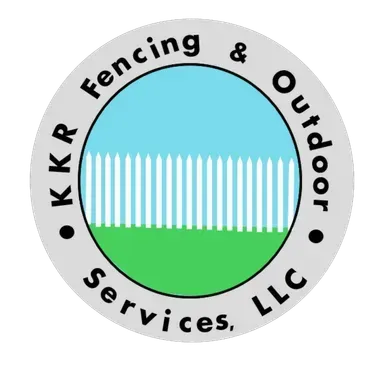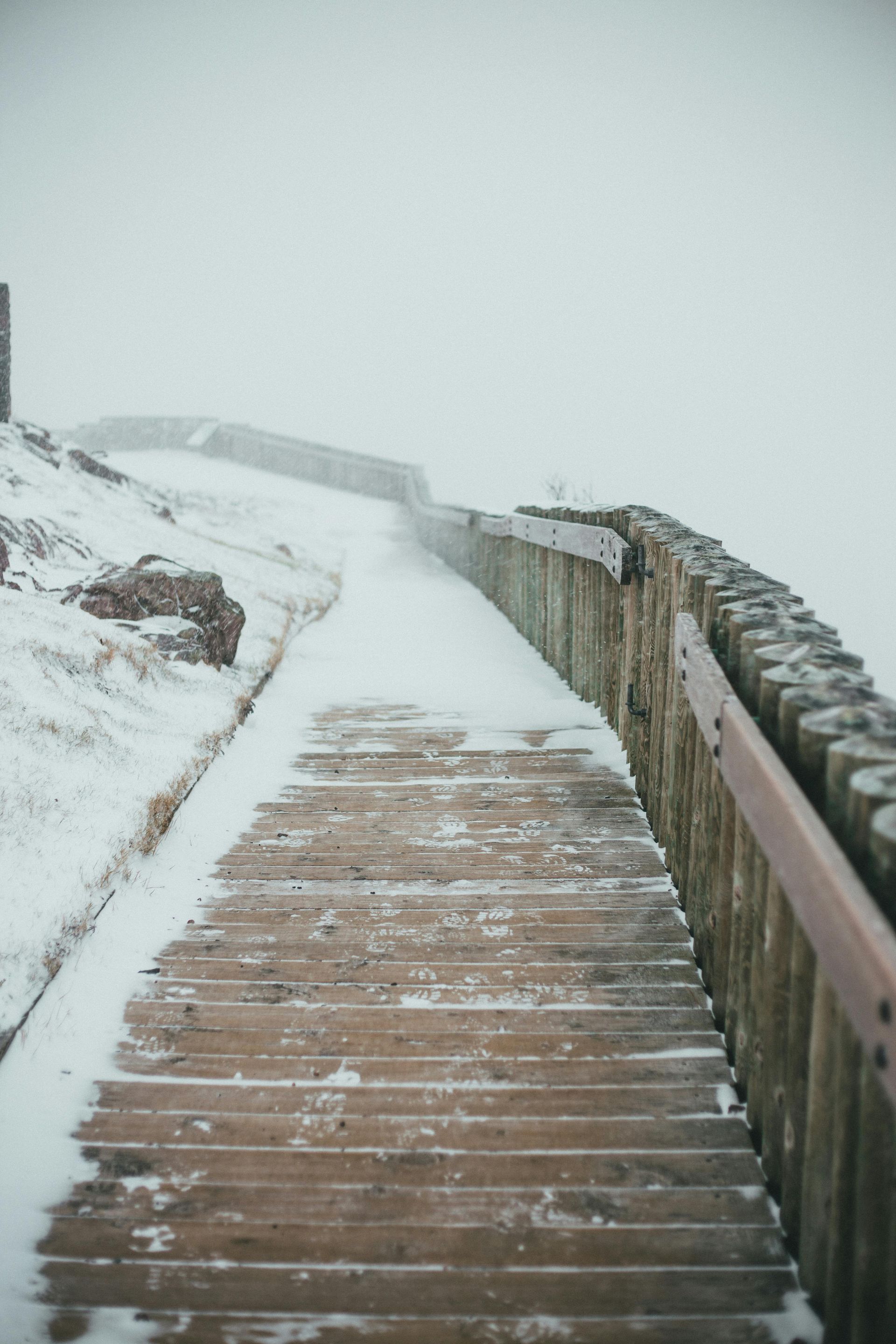7 Signs Your Fence Needs Repair Before Winter Storm Damage
Key Takeaways
- Inspect for 7 critical signs, including leaning posts and rotting wood, before winter arrives
- Fall inspections prevent minor damage from escalating under snow and ice pressure
- Trim nearby branches to minimize storm-related fence damage risks
- Apply weatherproof sealants to help wood fences resist freeze–thaw cycles
- Schedule professional repairs early to ensure quality work before winter arrives
Why Winter Weather Threatens Your Fence
Winter conditions create unique challenges that can devastate an already weakened fence. Understanding these seasonal threats helps you prioritize maintenance before the first snowfall.
The freeze–thaw cycle ranks among winter's most destructive forces for outdoor structures. When water in the soil freezes, it expands and pushes fence posts upward through a process called frost heave. As temperatures warm, the ground contracts unevenly, leaving posts loose or tilted. This repeated expansion and contraction weakens foundations over time, particularly in regions with fluctuating temperatures.
Heavy, wet snow can accumulate on horizontal rails, creating immense weight that causes sagging or complete breaks. Ice forms in existing cracks and expands, making materials brittle and prone to shattering. When you combine these factors with strong winter wind gusts, you've created perfect conditions for fence failure.
Cold weather damages fences through moisture-related issues as well. Rain and melting snow seep into wood grain, promoting rot and encouraging mold growth. Even vinyl fences can crack under extreme cold, while metal components face accelerated corrosion, especially when exposed to road salt runoff. Homeowners in snowy climates report the highest rates of storm damage claims in late winter, when cumulative stress reaches its peak.
7 Warning Signs Your Fence Needs Immediate Attention
Learning to spot fence damage before winter begins with recognizing these seven critical warning signs. Each indicates underlying problems that storms will exploit if left unaddressed.
Sign #1: Discoloration and Staining
Dark spots or graying wood signal moisture exposure and early rot development. Mildew thrives in damp corners and spreads rapidly once buried under leaves or snow. Metal fences display reddish-brown rust streaks indicating corrosion beneath the surface, while vinyl shows fading or chalky residue from UV damage. These aren't merely cosmetic concerns; they reveal material breakdown that accelerates dramatically in winter conditions.
Sign #2: Cracks, Splits, and Splinters
Fine lines in wood boards widen with each temperature swing, creating openings for infiltration by water, which freezes and expands. Check horizontal rails carefully for hairline fractures, especially if your fence endures intense summer heat. Even minor cracks become major structural failures once ice forms inside them.
Sign #3: Loose or Leaning Posts
Wobbly foundations from soil erosion or inadequate installation shift dangerously under pressure. Test each post by pushing firmly at shoulder height: any movement indicates compromised stability that requires immediate repair. Frost heave worsens this problem exponentially, as frozen soil lifts posts and then drops them unevenly when temperatures rise.
Sign #4: Sagging or Warped Sections
Panels that droop between posts indicate that gravity and moisture have weakened structural supports. This type of damage makes your entire fence line vulnerable to collapse under snow weight. Warped boards that bow outward or inward show moisture absorption that will worsen when temperatures drop.
Sign #5: Ground Contact Issues
If fence boards touch the ground, constant dampness breeds rot that spreads upward through the structure. Proper clearance of at least 2 inches between the fence bottom and soil is essential for longevity. In wet winters, this contact can turn boards to mush within a single season.
Sign #6: Damaged Hardware and Weak Joints
Rusted hinges on gates creak and fail, while corroded nails in wood pop out during expansion and contraction. These connection points bear the brunt of lateral wind stress, common in winter squalls. Give rails a firm shake—excessive movement signals hardware failure that won't survive heavy snow loads.
Sign #7: Peeling or Faded Protective Finishes
Peeling paint or sealant layers expose bare wood to the elements, hastening decay and rot. On chain-link fences, frayed wires or loose fabric signal wear that storms will worsen. Protective coatings serve as your fence's first line of defense against moisture, and their failure leaves the underlying material vulnerable to freeze–thaw damage.
Walk your perimeter on a dry fall day and take note of these seven warning signs. Early detection prevents small blemishes from becoming storm casualties that require expensive emergency repairs.
How to Inspect Your Fence Like a Pro
A systematic inspection reveals whether your fence is ready for winter's challenges. This hands-on process takes just an afternoon but provides invaluable peace of mind.
Start with work gloves, a carpenter's level, flashlight, notepad, and screwdriver. A camera helps document issues for insurance claims or contractor consultations.
Begin with posts, using your level to detect leans greater than 2 degrees from vertical. Push firmly on each post to test stability, and note any cracks in the surrounding soil indicating movement. Next, examine boards and rails by running your hands along edges to feel for rough spots or sharp splinters. Press on panels to test for flex—significant bowing signals structural sag.
Test all gates and hardware by swinging them through their full range of motion. Listen for binds or squeaks, which indicate misalignment, tighten loose screws, and lubricate hinges to prevent freeze-locks. Measure clearance under boards and trim any branches within 10 feet that could fall during storms. Clear away leaves and debris that create dampness and accelerate decay.
The best time for this inspection is during mild fall weather when materials are dry and easily workable.
Repair vs. Replacement: Making the Right Choice
When facing significant damage, you'll need to decide whether repair or replacement makes more sense.
Fences over 15 years old showing widespread wear typically warrant replacement. If 20% or more of your fence displays problems like rot, severe leaning, or multiple broken sections, starting fresh prevents endless minor repairs. Conversely, newer fences with isolated damage respond well to targeted fixes.
Wood accepts spot repairs effectively when caught early, but vinyl cracks require full panel replacement since they can't be patched. Metal rust spreads quickly once established, often making replacement more cost-effective. Consider upgrading to more weather-resistant materials if replacement becomes necessary.
While repairs cost less initially, they may recur if underlying problems persist. Replacement offers better longevity, especially with modern materials engineered to handle freeze–thaw cycles. Calculate repair costs versus replacement over a 5-year period to understand the real financial impact.
Protecting Your Fence From Winter Storm Damage
Prevention proves far more effective than repairs when it comes to winter fence care. These proactive measures significantly reduce storm damage risks.
Ensure posts sit in concrete footings at least 24 inches deep (36 inches in frost-prone areas) to resist heave. Add diagonal braces to panels in exposed corners or particularly windy locations. Seal wood surfaces annually with breathable products that block moisture while allowing for natural expansion. For metal components, rust inhibitors dramatically extend lifespan. Apply all coatings during dry fall weather for optimal adhesion.
Trim trees to remove branches within 10 feet that could break and fall during storms. Clear away yard debris that becomes dangerous projectiles in high winds. Secure patio furniture and other outdoor items that might blow into your fence. Maintain proper elevation of fence bottoms above soil and slope surrounding ground away from the fence line for better water runoff. Standing water accelerates rot and creates prime conditions for freeze–thaw damage.
When to Call Professional Fence Repair Services
While DIY maintenance handles minor issues well, certain situations demand professional expertise.
Extensive structural work, such as straightening multiple leaning posts or resetting deep foundations, requires specialized equipment and training. Attempting these repairs yourself risks injury or incomplete fixes that fail under storm stress. Material-specific work like vinyl welding, advanced wood restoration, or metal fabrication requires certified expertise.
Fall schedules for fence contractors fill quickly as homeowners rush to prepare for winter. Booking early ensures you secure the best professionals and complete work before harsh weather arrives. Working with unstable structures, at heights, or in high-wind conditions demands trained professionals with proper insurance and safety equipment.
Select local contractors with verified reviews, warranties on their work, and thorough knowledge of building codes. Experienced professionals understand optimal weather windows for different types of repairs in your area and provide peace of mind that your fence will withstand winter's worst conditions.
Frequently Asked Questions
How can I tell if my fence needs repair?
Look for visible signs like leaning posts, cracked or split boards, and discoloration during a careful walk around your property perimeter. Perform a simple shake test on rails to reveal loose joints, and press on wooden sections to check for soft spots indicating rot. These symptoms suggest moisture damage or structural stress that will worsen significantly once winter weather arrives.
What are the most common signs of fence damage before winter?
The most telling indicators include sagging panels between posts, rust spots on metal components, and fence boards making contact with the ground. Watch for posts that have shifted or tilted, which are often caused by frost heave from previous winters, along with peeling paint that exposes vulnerable wood. Addressing these warning signs early prevents them from escalating into costly emergency repairs during winter storms.
Should I repair or replace my damaged fence?
Choose repair for minor, localized issues affecting less than 20% of your fence structure, especially if your fence is relatively new. Consider replacement if your fence is more than 15 years of age or displays widespread rot, severe warping, or structural instability. Factor in your budget, material condition, and long-term property plans when making this decision.
How can I prevent fence storm damage during winter?
Start by trimming overhanging tree branches and applying weatherproof sealant to wood surfaces before temperatures drop. Secure all hardware, elevate fence bases at least 2 inches above soil level, and reinforce weak spots with additional supports. Regular maintenance including clearing debris and ensuring proper drainage significantly reduces stress during winter storms.
Does cold weather actually damage fences?
Yes, cold weather creates multiple damaging conditions for fences of all materials. Freeze-thaw cycles cause frost heave that shifts fence posts, while accumulated snow adds weight stress leading to breaks or collapse. Taking protective steps like proper sealing, adequate installation depth, and regular maintenance significantly reduces these cold-weather effects.
Final Thoughts
If you take the time to prepare your fence now, you can avoid headaches when winter storms arrive. From identifying the seven critical warning signs to deciding between repair and replacement, each action you take this fall protects your investment. With proper preparation, your fence will stand strong through winter and emerge ready for another season of reliable service.
Contact our experienced team for a free estimate, and we can help you keep your fence storm-ready before the first snowfall.
Reference:
https://www.sciencedirect.com/topics/earth-and-planetary-sciences/frost-heave


